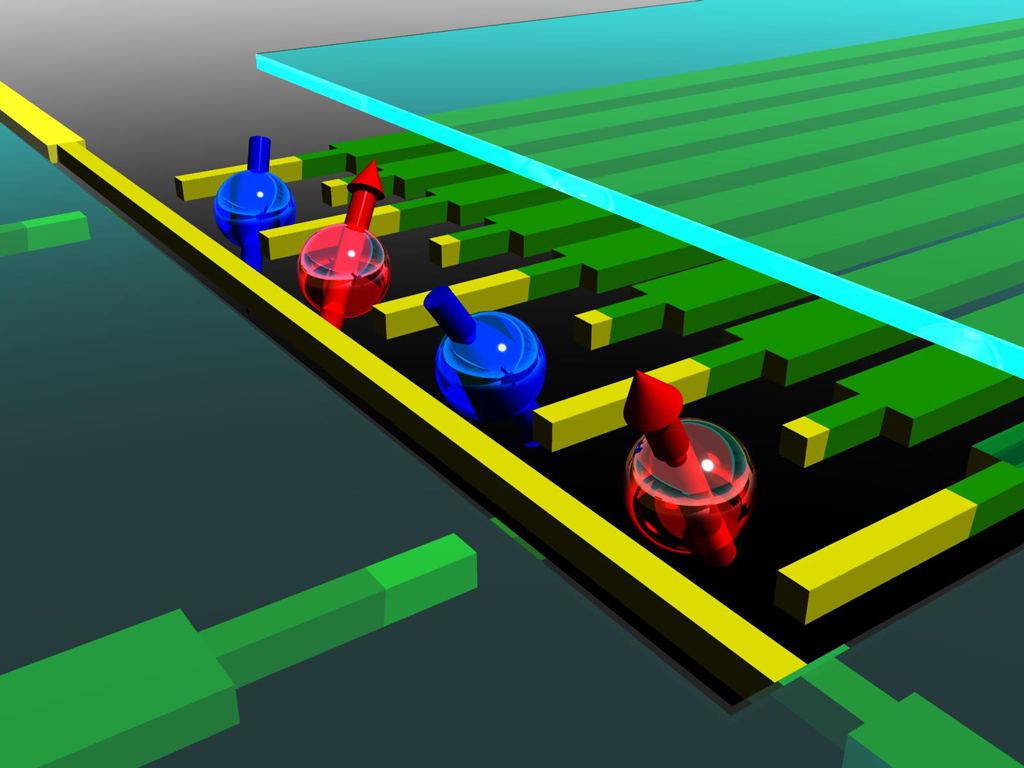ACADEMIA
RIKEN connects the dots for quantum supercomputing

Arrays of electrons trapped in nanoscale circuitry could form the basis for future scalable quantum supercomputers
A single electron trapped in a semiconductor nanostructure can form the most basic of building blocks for a quantum supercomputer. Before practical quantum supercomputers can be realized, however, scientists need to develop a scalable architecture that allows full control over individual electrons in computational arrays.
Matthieu Delbecq and colleagues from the RIKEN Center for Emergent Matter Science, in collaboration with researchers from Purdue University in the United States, have now demonstrated the scalability of quantum dot architectures by trapping and controlling four electrons in a single device.
Electrons have a property known as spin that can be either ‘up’ or ‘down’. This is the same binary coding as used in conventional computing, but electrons can also be linked at the quantum level to form quantum bits, or ‘qubits’, that can have many more usable states, providing dramatic improvements in computational performance.
Circuits of quantum dots are one of the most promising practical routes to harnessing this potential. A quantum dot creates an electric field ‘well’ that is too deep for the electron to escape, allowing individual electrons to be confined to a space just a few nanometers across. Scientists have fabricated two- and three-dot devices in the past, but a real processor would need many more. Delbecq and his colleagues have now used a similar approach to create a four-quantum-dot structure, proving the scalability of this architecture.
“The number of manipulated electrons is increased only by one with respect to previous structures,” explains Delbecq, “but even a small increase in the number of electrons significantly increases the complexity of device manipulation.”
Each of the dots in the device created by Delbecq’s team was formed by three nanoscale metallic electrodes on a semiconductor substrate (Fig. 1). The capacitance between each dot couples the electron in one dot to that in the next, and the researchers could tune the strength of this coupling by adjusting the voltages applied to the electrodes. All this was achieved at extremely low temperatures, just a fraction above absolute zero.
The researchers demonstrated a scheme for both controlling the electrons in the four quantum dots and measuring or ‘reading out’ the spin state of the electrons. “The next step is to form four spin qubits with this architecture and use them to actually perform computations,” says Delbecq. The results demonstrate that quantum dot architecture has the potential to be scaled up to the number of qubits needed to realize a fully functional quantum supercomputer.

